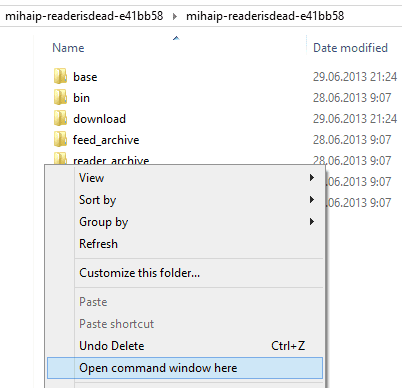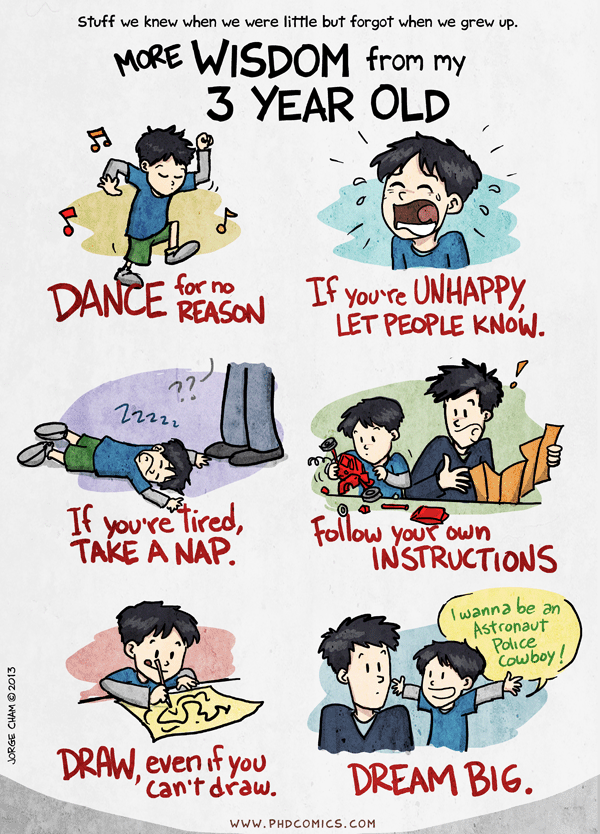
Patrick Stewart, Elmo and Ian McKellen

Patrick Stewart, Elmo and Ian McKellen


set PYTHONPATH=%cd%
c:\python27\python reader_archive\reader_archive.py --output=download
The Mycenaean civilization followed the Minoan civilization in Greece. The Mycenaeans used a script called Linear B which descended from an undeciphered earlier script called Linear A. Like the script used in the Indus-Saraswati civilization, this was an unknown script representing an unknown language and that made deciphering it a difficult problem. Despite that the script was deciphered and the credit for that is attributed to an English architect named Michael Ventris.
According to an article, Ventris would not have made the breakthrough, if not for the work of an American classical scholar named Alice Kober.
In the search for clues, Kober learnt a whole host of languages – from Egyptian to Akkadian to Sumerian and Sanskrit. But Kober was rigorous in her work – refusing to speculate on what the language was, or what the sounds of the symbols might be. Instead, she set out to record the frequency of every symbol in the tablets, both in general, and then in every position within a word. She also recorded the frequency of every character in juxtaposition to that of every other character. It was a mammoth task, performed without the aid of computers. In addition, during the years surrounding World War II, writing materials were hard to come by. Kober recorded her detailed analysis on index cards, which she made from the backs of old greetings cards, library checkout slips, and the inside covers of examination books. By hand, she painstakingly cut more than 180,000 tiny index cards, using cigarette cartons as her filing system.Kober’s monumental effort paid off. She spotted groups of symbols that appeared throughout the inscriptions – groups that would start the same, but end in consistently different ways. That was the breakthrough. Kober now knew that Linear B was an inflected language, with word endings that shifted according to use – like Latin, or German or Spanish.[Alice Kober: Unsung heroine who helped decode Linear B]
Related posts:
Related posts brought to you by Yet Another Related Posts Plugin.
| Piled Higher & Deeper by Jorge Cham |
www.phdcomics.com
|
|
 |
||
|
title:
"More Wisdom from my 3 Year Old" - originally published
6/16/2013
For the latest news in PHD Comics, CLICK HERE! |
||
Boxing looks to be swapping one drug user for another as the 'War Machine' has his four-year ban slashed
Larry Olubamiwo stands 6ft 4in, weighs north of 18 stone and owns a right hand that can induce instant anaesthesia. He was also, until last week, banned from boxing for four years.
Olubamiwo's nickname is 'War Machine'. But conventional warfare, the ancient duel of skill and fists and will, was not enough: he deployed chemical weapons too – including EPO, human-growth hormone, steroids and plenty more besides. After he was banned, having admitted using 13 illegal substances, the UK Anti-Doping chief executive, Andy Parkinson, called him "an extreme example of someone who has engaged in an intentional and uncompromising doping programme".
But a few days ago, without stink or fuss or fury, Olubamiwo was given his licence back after serving just one year of his suspension. On 29 June he will return at his old battle ground, the York Hall in Bethnal Green, swinging bloodily and crudely and probably recording his 11th victory in 14 fights.
You may wonder how this can happen. Certainly, some in boxing do. Not everyone knows that the World Anti-Doping Agency's code allows for up to a 75% reduction in a ban for those whose evidence helps convict others. Olubamiwo certainly did.
Last year he befriended another small-hall fighter, Craig Windsor, on Facebook and they discussed steroids. Olubamiwo then passed on the details to UK Anti-Doping. And when Windsor later pleaded guilty, and was banned for three years and nine months, Olubamiwo's sentence was slashed.
As a strategy it was not so much float like a butterfly, sting like a bee, as sing like a canary. But it worked.
It may be the largest reduction in a confessed doper's sentence in British sporting history. Certainly, when I spoke to Graham Arthur, the director of legal at UK Anti-Doping, he could not come up with a bigger one. But the decision to allow Olubamiwo to box again throws up many difficult and often grubby issues. There is little here that is black or white.
Few, for instance, disagreed with the decision to give six-month sanctions to George Hincapie, Levi Leipheimer and the other cyclists who testified against Lance Armstrong to Usada. Without their evidence, Armstrong's reputation would be stained but not destroyed.
The problem in Olubamiwo's case is that he has not offered up a Mr Big, but a 5ft 7in super-featherweight with a 11-12 win/loss record. From afar it looks as if the sport is merely swapping one confirmed drug user for another.
And boxing is not cycling. Taking performance-enhancing drugs does not just alter the balance of competition; it increases the danger to your opponent's health. As one leading boxing trainer puts it: "We know that steroids can make you stronger, faster and more aggressive. We also know Larry is a convicted user. Yet in two weeks' time he'll be back in the ring.
"You can understand why ordinary fighters, who are all paying fees to the board and training the right way, have no confidence in the British Boxing Board of Control's decision to let him fight again."
Hypothetically this merry-go-round could continue. If Windsor was to also shop a boxer tomorrow he too could have his ban reduced by 75% and be fighting again in early 2014 – although Arthur insists that the rules are "pretty carefully calibrated" to make sure the provision is not applied cheaply. Shopping someone for puffing cannabis, for instance, would not cut it.
There is another worry in the Olubamiwo case: that he has juicier information which he is keeping close to his 50-inch chest. Last year, he claimed that "a large minority" of boxers in the UK were taking drugs. "I'm saying this because I have seen people, boxers, buying stuff from the same guy that I've bought stuff from," he said. "I have spoken to boxers who are telling me they've done this; they've done that. If I was to mention names, it would blow people's socks off."
There is no evidence to back up Olubamiwo's claims. But if he knows of a dealer out there, Arthur insists the "rules oblige him to come clean" otherwise his licence will be revoked. "He is under licence," says Arthur. "The slate isn't wiped dry."
Olubamiwo is a polymath of sorts: he ran 10.7 seconds for the 100m in his youth, served five of a 10-year stretch for armed robbery and has a degree in pharmaceutical chemistry – which he has certainly put to good use.
But in an interview last year, he also put forward a valid point, admitting: "I'm not disputing that I have broken a rule and I should be punished" before pointing the discrepancies in rules between countries and governing bodies.
The list of big-name fighters who have tested positive yet barely receive sanction is lengthy. It shames the sport. Boxing is howling out for a universal governing authority, the equivalent of an IAAF or Fifa, enforcing a universal drugs policy. As it is, an offence carrying a four-year ban in the UK might get a slap on the wrist in the United States.
Perhaps, though, we also need to confront an ugly truth: effective anti-doping work sometimes relies on intelligence from people that we'd like to see permanently barred from sport – no matter how unpalatable it is that they are pardoned when they should be punished.
This article about the privatisation of the UK’s electricity by James Meek in the London Review of Books from 13 September 2012 (I’m still catching up) is well worth a read.
There are many good bits (where by “good bits” I mean “bits that make one despair”) but this section caught my eye:
…before full competition was established [in the electricity industry], he, the regulator [Stephen Littlechild], imagined he would act as a surrogate, a kind of State Competitor General, enforcing occasional price cuts to keep the private companies on their toes. In the end, he thought, the need for regulation would largely wither away. What Littlechild, an academic with no business experience, didn’t fully take on board was that the reason private companies compete with each other isn’t that they like competition. They hate it, and will only compete if forced to do so. Rather than competing with a rival on price or product or revenue, they’ll try to eliminate the rival firm and take over its territory by buying it; or reach an unwritten agreement on an oligopolistic cartel of a few big firms, carving up the market between them.
I don’t know why, among all the arguments against privatising certain industries, this hadn’t hit me before: “The reason private companies compete with each other isn’t that they like competition. They hate it.” Of course, yes.

I missed this back in March 2012, but it bears re-visiting. Here's a series of Doonesbury strips that some newspapers refused to run in spring 2012. The strips criticize Republican state legislatures' plans to require transvaginal probes for women contemplating abortion, with special emphasis on Texas governor Rick Perry.
Trudeau wrote: "Ninety-nine percent of American women have or will use contraception during their lifetimes. To see these healthcare rights systematically undermined in state after state by the party of 'limited government' is appalling. "In Texas, the sonograms are the least of it. The legislature has also defunded women's health clinics all over the state, leaving 300,000 women without the contraceptive services that prevent abortions in the first place. Insanity."
Trudeau is dismayed by the newspaper reaction. "I write the strip to be read, not removed. And as a practical matter, many more people will see it in the comics page than on the editorial page," he wrote.
"I don't mean to be disingenuous. Obviously there's some profit to controversy, especially for a satirist. If debate is swirling around a particular strip, and if its absence creates blowback, then I'm contributing to the public conversation in a more powerful way. But I don't get up in the morning and scheme about how to antagonise editors. Some of these folks have supported me for decades."
Oh, Texas... This is why I want to leave you. (via Reddit) ![]()
by Matthew Cobb
Crispian Jago has a blog (not a website) called The Reason Stick. The other day he posted this excellent Venn Diagram of Irrational Nonsense., with four fields: Religious Bollocks, Quackery Bollocks, Pseudoscientific Bollocks and Paranormal Bollocks. At its heart, like a malevolent spider (sorry, spiders!) sits Scientology… Click to enbiggen and find your favourite woo!
h/t @SLSingh